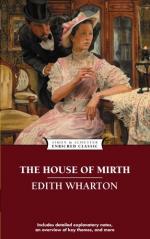|
This section contains 670 words (approx. 2 pages at 400 words per page) |

|
The House of Mirth belongs to the school of naturalism. In discussing the significance of the title, R. W. B. Lewis notes that the novel was "Edith Wharton's first full scale survey of the comedie humaine, American style." Honore de Balzac is a particularly important antecedent for this novel. Like Balzac, Wharton presents a spectrum of society from the poor to the rich. Like Balzac, she sees many of her characters controlled by greedy, acquisitive passions which belie the elegant veneer of their surroundings. Gary H. Lindberg sees Balzacian elements in Lily Bart's characterization: "Like Balzac, [Wharton] gives moral weight to her heroine by analyzing her under extraordinary pressures — financial need, vanity, ambition, impulse, social expectation — and she illuminates each stage of moral compromise."
Closer to home, Blake Nevius finds a trace of Theodore Dreiser's determinism in The House of Mirth, pointing to "the...
|
This section contains 670 words (approx. 2 pages at 400 words per page) |

|




